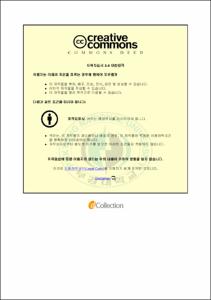A Comprehensive Study on Solvent Extraction of Lithium Ion from Aqueous Solution and Its Application in Seawater
- Abstract
- Solvent extraction of lithium ion using kerosene as a solvent was proposed. The extraction of lithium ion using various mixed extractants of β-diketone and neutral ligand in kerosene was performed to find the suitable extractant combination. Considering the extraction efficiency, the suitable extractant combination was 0.02 M TTA and 0.04 M TOPO. For the development of lithium extraction process from seawater, the effects of dominant ions in seawater were examined in various extraction conditions. The extraction efficiencies generally decreased with increasing the concentration of dominant metallic ions and increased with increasing the pH of the aqueous solutions, but Cl- ion showed only minor effect on the efficiency even up to its concentration in seawater. Except for Mg2+ ion, more than 70% of lithium ion could be extracted at pH 10.6 from aqueous solutions with a dominant ion at its concentration in seawater.
Extraction efficiency severely influenced by stoichiometric parameters. Among the stoichiometric parameters, volume ratio [A/E] was the most influential parameter. After extraction, lithium ion could be easily stripped from the extraction solution by using acidic solutions. Stripping efficiency decreased with a pH of acidic solutions, and the kind of acid did not affect on the stripping efficiency. Extraction efficiency has maintained more than 90% even when the extraction solution recycled three times. Even though magnesium ion was precipitated by NH4OH prior to solvent extraction process, 64% of lithium ion could be extracted from seawater by this solvent extraction process.
- Issued Date
- 2014
- Awarded Date
- 2014. 2
- Type
- Dissertation
- Publisher
- 부경대학교
- Affiliation
- 대학원
- Department
- 대학원 화학공학과
- Advisor
- 주창식
- Table Of Contents
- Contents
List of Tables
List of Figures
Abstract
1. Introduction
2. Theory and Literature Survey
2.1. Seawater
2.1.1. Seawater Characteristic
2.1.2. Ions in Seawater
2.1.2.1. Lithium
2.1.2.2. Sodium
2.1.2.3. Magnesium
2.1.2.4. Calcium
2.1.2.5. Potassium
2.1.2.6. Chloride
2.2. Solvent Extraction
2.2.1. Definition
2.2.2. Extraction of Metal Complexes
2.2.3. Factor Influencing the Extraction
2.2.3.1. Effect of the Extractant
2.2.3.2. Effect of pH and Concentration of Extractant Reagent
2.2.3.3. Effect of Metal Ion Concentration
2.2.3.4. Effect of the Organic Solvent
2.2.4. Extractant for Solvent Extraction
2.2.5. Synergistic Effect of TTA and TOPO
2.2.6. Kinetic Factors in Extraction
2.2.7. Stripping of Lithium Ion from Extraction Solution
3. Experimental
3.1. Reagents
3.2. Experimental Procedure
4. Results and Discussion
4.1. Equlibrium Extraction Time
4.2. Effect of Extractant Combination
4.3. Effect of Concentration β-diketone
4.4. Effect of Dominant Ions
4.5. Stoichiometric Study
4.5.1. Equilibrium Extraction Time
4.5.2. Effect of Initial Concentration of Lithium
4.5.3. Effect of Volume Ratio
4.5.4. Effect of TTA Concentration
4.6. Kinetic Study of Solvent Extraction of Lithium
4.7. Stripping of Lithium Ion and Recycling Extraction Solution
4.7.1. Stripping of Lithium Ion by Using Acidic Solutions
4.7.2. Recycling of Extraction Solution
4.8. Application for Lithium Extraction from Seawater
5. Conclusions
References
Acknowledgement
- Degree
- Master
- Files in This Item:
-
-
Download
 A Comprehensive Study on Solvent Extraction of Lithium Ion from Aqueous Solution and Its Application.pdf
기타 데이터 / 1.27 MB / Adobe PDF
A Comprehensive Study on Solvent Extraction of Lithium Ion from Aqueous Solution and Its Application.pdf
기타 데이터 / 1.27 MB / Adobe PDF
-
Items in Repository are protected by copyright, with all rights reserved, unless otherwise indicated.